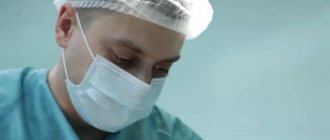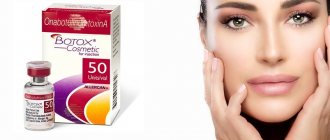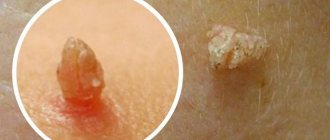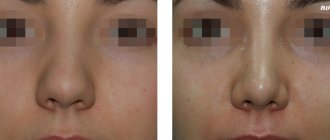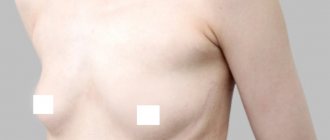When you can't do without surgery
Varicose veins are a serious and, unfortunately, very common disease. Especially in the modern world, with its sedentary lifestyle, unfavorable environment and genetic diseases.
Varicose veins are a vein disease associated with weakening of the internal valves and venous walls.
Blood flow in the veins slows down, stagnation occurs, causing the walls to stretch.
Because of this, veins begin to appear through the skin.
It looks very ugly, but that's not the worst thing. Much worse possible complications:
- pain and cramps in the legs;
- thrombophlebitis.
- trophic ulcers;
It is in order to avoid these complications or prevent their development that surgery is performed for varicose veins on the legs.
In what cases is surgery to remove leg veins prescribed? There are several options for surgical intervention.
- Severe heaviness in the legs, swelling, fatigue.
- Extensive damage to veins by varicose veins.
- Thrombophlebitis.
- Trophic ulcers.
Restrictions and contraindications for surgery
Unfortunately, even if severe forms of varicose veins develop, accompanied by complications and a severe clinical picture, the patient cannot always undergo surgery.
There are a number of contraindications that, even if they do not completely exclude the possibility of surgical intervention, still force one to postpone the operation for a certain period of time:
- Coronary heart disease - in this case, it is necessary to conduct a more complete comprehensive examination.
- The same applies to grade 3 hypertension.
- Active infectious and inflammatory processes in the body - before performing surgery to treat varicose veins, you need to cope with the infection or eliminate inflammation.
- 2nd and 3rd trimesters of pregnancy - for pregnant women, it is better to postpone any surgical procedures until the woman gives birth. The only exceptions are those cases when there is a serious danger to the life of the mother or child, and surgery can help.
- Skin disease in the area of surgery to combat varicose veins. We are talking about eczema, various forms of dermatosis, etc.
- There are also certain age restrictions, of course concerning older people. In some cases, advanced age, as well as the accompanying diseases of senility, increase the risk of developing postoperative complications or endanger the life of a person on the operating table.
Should I have surgery?
Many people are afraid of any kind of surgery, but removing veins on the legs even sounds scary. A lot of questions and concerns immediately arise. And the main thing is how will the blood continue to rise to the heart if the veins are removed? In fact, only superficial veins are removed, while up to 90% of the blood flow passes through internal, stronger vessels that are not susceptible to varicose veins .
Before agreeing to surgery for varicose veins, you still need to weigh the pros and cons.
Important! If you still have any doubts, do not hesitate to ask questions to your doctor, he will explain, tell and show everything.
Modern medicine has reached a level where vein removal is completely safe.
Moreover, a correctly performed operation guarantees complete elimination of varicose veins.
Of course, provided that the patient follows all the doctor’s recommendations.
If you refuse surgery, you will have to be content with a slight relief from the pills. In addition, advanced varicose veins are a risk of developing thrombophlebitis . And this is already a deadly disease.
True, there are situations in which surgery is really not worth it. If the condition of the veins in the legs is too advanced, then, alas, surgery cannot be performed. The condition of the veins is assessed by a phlebologist and a vascular surgeon before removal. To do this, you need to do an ultrasound examination of the veins, an external examination and a blood test.
Also, surgery is not performed if the patient suffers from coronary artery disease or hypertension. In these cases, there is a high risk of complications during surgery. Skin damage, opened trophic ulcers and various skin diseases are also contraindications. So are infectious diseases. They need to be treated first.
Important! For elderly people and pregnant women from the second trimester, surgery is also contraindicated.
If a specialist, after all the research, insists on surgery, you still shouldn’t refuse. After surgery to remove varicose veins on the legs, there is a chance to get rid of the unpleasant and dangerous disease forever.
Rehabilitation
Upon completion of EVLT, the patient should rest for half an hour, after which he is recommended to take a walk at a fast pace, the duration of which should be at least 40 minutes, which is necessary to normalize the pressure of the venous blood flow. Then the patient must follow the recommended physical activity regimen: walk daily at an average pace, lasting from 60 to 90 minutes. You can count steps using fitness bracelets, smart watches and phones. In order to prevent the development of vein diseases, it is enough to walk about 10 thousand steps every day.
Where to have vein surgery
Particular attention should be paid to where exactly you will have the operation. Their further condition entirely depends on the qualifications of the doctor in whose hands your legs will be. Correctly performed surgical treatment of varicose veins of the lower extremities is completely safe .
Today, in almost every city there is an opportunity to choose a clinic and a doctor. What should you pay attention to?
- Clinic equipment . Modern equipment and suitable medications increase the chances of a successful outcome.
- Doctor's qualifications. Do not hesitate to ask where and how the specialist was trained, check all diplomas and certificates.
- Patient reviews . The Internet gives us the opportunity to get acquainted with real and varied patient reviews about the clinic and the doctor.
Prevention
When diagnosed with varicose veins, it is important for patients to strictly monitor their health and prevent the progression of the disease, otherwise the situation may end in an unpredictable outcome. To prevent varicose veins after surgery, you need to monitor your weight, eat right, lead a healthy, active lifestyle, and give up bad habits. If there are characteristic signs, it is forbidden to self-medicate and take medications at your own discretion. Only timely treatment under the supervision of a doctor will help get rid of the disease, prevent relapse and negative consequences.
How is the operation performed?
There are several different techniques for surgical vein removal.
Direct surgical intervention is the most proven, long-tested, but at the same time the most radical method.
The surgeon makes two incisions on the leg: in the groin area and on the ankle.
Additional, smaller incisions are made in the area of the main venous nodes. The vein is excised through these incisions .
The operation itself lasts about 2 hours. It can be performed under either local or general anesthesia. A thin wire, a venous extractor, is inserted through an incision in the groin, which is used to remove the vein. After the operation is completed, the incisions are carefully sutured. The main advantage of this method is that even a large vein with a very wide lumen can be removed in this way.
Important! The patient will be able to get to his feet within 5 hours after the operation.
Sometimes there is no need to remove the entire vein; it is enough to get rid of the affected part. In this case, a miniflebectomy is performed. Two small incisions are made in the area of the affected area of the vein, and through them this area is removed .
What to do after vein surgery? Follow all doctor's recommendations. They are very individual, and largely depend on the degree of neglect of the disease, individual characteristics and concomitant diseases.
Sclerotherapy
This is one of the newest methods of combating varicose veins. Its main advantage over the actual operation is the absence of incisions. Sclerotherapy of the veins of the lower extremities is carried out using syringes with a thin needle.
A sclerotant is injected into a vein. Under its influence, the inner layers of the vessel are destroyed, and the middle ones simply stick together. As a result, the vessel simply falls out of the bloodstream.
Attention! Within 1-2 days you will notice how the damaged vein disappears.
After such an operation, the patient comes to his senses much earlier. Within an hour he can get up and move around on his own. In addition, with sclerotherapy, there is less chance of developing hematomas at the injection site.
Laser vein removal
Another innovative method is laser surgery. This also involves making small punctures through which a laser LED is inserted into the vein .
It heats up the walls of blood vessels and glues them together. At the same time, under the influence of temperatures, all microorganisms die, which reduces the likelihood of developing an infection.
The consequences of laser leg vein removal are minimal. This procedure can be done literally on the way home after work, and the next day you can return to work.
Important! The disadvantages include low accessibility: the procedure is expensive, and not every clinic has the necessary equipment.
Types and features
How to properly treat a suture after surgery
There are several methods; the cost of surgery to remove varicose veins depends on the complexity, stage of the pathology and the use of medical equipment.
1. Phlebectomy.
The procedure involves eliminating the affected vessels. Suitable for excision of large main canals and small sections of arteries with nodes. It is performed under general or epidural anesthesia. The choice of method for removing a vein depends on its diameter, the localization of the process, the trajectory of the area (winding or straight shape), and the length of the reflux. To understand what phlebectomy is, you can briefly outline the stages of the operation. The doctor makes a small incision, up to 5 cm, in the area of the inguinal fold, at the junction of the superficial vein and the deep vein. There is a valve in this area, so this is where the artery is cut off and pinched.
The second incision during phlebectomy is made on the inside of the ankle or on the top of the leg, depending on the location. A vein is pulled out from the resulting hole and a probe made of a special alloy is inserted. When its second end reaches the first excision site, the vessel is fixed with a thread. If progress is difficult during surgery, several incisions are made in the veins affected by varicose veins. This procedure has many positive reviews from patients with severe pathology.
2. Stripping.
This is a simplified phlebectomy technique. Surgery for varicose veins on the legs does not involve removing the entire vein, but only the affected area. Manipulations are carried out through a puncture in the skin. During the procedure, tissue trauma is minimized. The diameter of the hole is only 5 mm, the seam is almost invisible, the rehabilitation period is short, and the risk of complications is low.
3. Sclerosis.
It is carried out in the initial stages of varicose veins, when the formation of spider veins and mesh just begins. In this case, removal is not required; the diseased area is excluded from the circulatory system by blockage. A medical drug, Sclerosant, is injected into the damaged artery, acting on the internal walls and gluing the veins together in case of varicose veins. After a while, a scar appears in this place, the destroyed artery completely disappears.
There are two techniques: the first is carried out for vessels with a diameter of 1 cm under local anesthesia. Under the control of a duplex scanner, a patient with varicose veins is injected with a substance through a puncture with a needle. The second option is to fill the gap with special foam. This is a safe and painless procedure. According to patient reviews, a noticeable effect occurs two months after the operation - swelling and bruising disappear, pain disappears, and a significant improvement in the condition of the patient with varicose veins in the legs is noted.
4. Surgery with laser.
This is a modern approach for the initial stages of pathology. Also used to remove the consequences resulting from phlebectomy. The process involves exposing the affected area to a beam and is carried out under computer control. Under local anesthesia, the patient is given a puncture in the skin, through which a light guide is delivered into a vein. Treatment of varicose veins with a laser is carried out by cauterizing the artery and its subsequent overgrowth. During manipulation, all layers of the vessel are destroyed and fall off under the influence of photocoagulation.
5. Radio wave interference.
A method similar to laser treatment for varicose veins. It is highly effective and has minimal risk of thrombosis. Among the complications, experts point out burns and inflammation. Thermal destruction with steam is also used. With this type of manipulation there is practically no pain, the inner walls of the vessel are sealed, stop receiving nutrition, fall off and are destroyed, in fact, removal occurs by cauterization for varicose veins on the legs.
Preparation
A correctly carried out preliminary stage is the key to a successful operation. It is necessary to undergo a number of diagnostic examinations:
- General analysis of blood and urine, the presence and number of platelets, the level of coagulation.
- ECG.
- Consultations with a therapist, phlebologist and surgeon.
- Examination using duplex sonography.
Preparing for surgery for varicose veins in the legs does not require any special measures. The patient's tolerance to drugs for administering anesthesia is determined. In case of general anesthesia, a cleansing enema is performed. You should not drink alcohol or smoke the day before; there should be no wounds or pustules on the lower extremities with varicose veins.
Rehabilitation and possible consequences
The postoperative period from leg vein surgery lasts literally a few hours. And the sooner the patient begins to move his legs, bend them, turn them, lift them, the shorter it will be. And the lower the risk of complications after surgery on the veins of the lower extremities.
It is necessary from the very beginning to stimulate blood flow in the remaining vessels, to promote the rapid rise of blood to the heart. You can also do this by placing your feet on a pad so that your feet are higher than your heart level.
The rehabilitation period after surgery to remove varicose veins of the lower extremities can last about two months . At this time, it is necessary to wear compression hosiery selected by a specialist.
As already mentioned, recommendations after surgery for varicose veins are very individual. However, some generalizations can still be made. In addition to wearing compression garments, it is important to:
- change your lifestyle to a more active one. Without this, varicose veins will return sooner or later;
- lose weight if you are overweight;
- do special exercises to strengthen the leg muscles;
- follow a diet for varicose veins;
- take medications for varicose veins.
The consequences of phlebectomy are usually minimal. Hematomas may appear in the area of incisions or punctures, however, as a rule, they quickly resolve. Some people who are prone to connective tissue overgrowth may develop scars at the incision sites. If you know that you have this characteristic, it is better for you to choose a less traumatic method.
After surgery to remove a vein in the leg, lumps and pain may occur. This happens extremely rarely, but it still happens sometimes. In this case, you must immediately consult a doctor.
Consequences after removal of a vein in the leg
Hematomas are a common consequence of venous surgery.
Any operation on the veins involves intervention in the body from the outside, so one can never exclude possible negative consequences of surgery. Although modern methods are improved and minimally invasive, complications are possible in some situations, among which the most common are:
- thrombosis;
- pain, bruises and hematomas;
- the formation of lumps in places where the vein is soldered.
Possible complications
After surgery to remove varicose veins, the following consequences are possible:
- Light bleeding from small vessels that were not ligated during surgery;
- Formation of bruises (usually disappear within 7-10 days after the intervention);
- Painful sensations (associated with injury to neighboring tissues);
- Swelling.
If all these phenomena are observed for more than 7 days, you should consult the best doctor.
As for complications, the following pathologies are possible:
- Feelings of numbness, loss of sensation (these consequences are associated with nerve damage);
- Heavy bleeding;
- Suppuration of sutures, hematoma formation;
- Thromboembolism (formation of blood clots and blockage of blood vessels).
Recommendations for the use of medications
Doctors at the Yusupov Hospital rehabilitation clinic not only explain to patients how to wear compression stockings and select the optimal mode of physical activity after EVLT, but also prescribe restorative drug treatment individually for each patient, taking into account his condition.
Drug therapy is used for the following purposes:
- as a preventive measure for the development of thrombosis;
- to strengthen vascular walls;
- for relief of postoperative pain in the vein;
- to eliminate hematomas and compactions.
Patients at the Yusupov Hospital who have undergone EVLT are prescribed modern medications that have an anticoagulant effect, phlebotonics and blood thinning medications.
Endovasal laser coagulation is an effective and safe operation, which is successfully used in the treatment clinic of the Yusupov Hospital for the treatment of varicose veins. The duration of the procedure, as a rule, does not exceed two hours and the patient can return to their normal lifestyle the very next day. The result after EVLT directly depends not only on the skill of the phlebologist, but also on the correct conduct of the rehabilitation period. The EVLT method has not only an excellent therapeutic result, but also an excellent aesthetic effect.
This low-traumatic operation requires the use of local anesthesia. The catheter is inserted through a small puncture, which ensures that there are no scars on the operated limb. To achieve maximum effect and prevent the development of severe complications after EVLT, the patient must strictly follow the recommendations of the phlebologist.
Author
Varicose veins: recommendations after vein removal surgery
The postoperative period usually lasts from 2-3 to 6 months. During this time, the body recovers and the person can return to the usual rhythm of life. To speed up the rehabilitation process, it is recommended to adjust the daily diet, perform feasible physical activity, wear elastic bandages or compression hosiery (stockings, tights) and adhere to medical recommendations.
Nutrition after leg surgery
The main task when creating a menu is to include in the diet as many foods as possible that thin the blood and help strengthen blood vessels. If you are overweight, it is first of all important to normalize your metabolism and adjust your weight.
Allowed foods that can be consumed every day include:
- Products containing vitamin C. Ascorbic acid neutralizes the negative effects of free radicals, strengthens the vascular wall and reduces its permeability. It is recommended to include citrus fruits, bell peppers, currants, cabbage, peaches, sorrel, spinach, sea buckthorn, cilantro, rose hips, and green peas in your diet.
- Products containing vitamin P. Rutin (vitamin P) has angioprotective properties and maintains the elasticity of the walls of blood vessels. It is found in black currants, parsley, apricots, grapes, cherries and cherries.
- Foods rich in coumarins. Coumarins have anticoagulant properties, due to which they prevent the development of thrombosis. Coumarins are found in cherries, red currants, asafoetida, red clover and Siberian ginseng.
- Seafood. During recovery after surgery for varicose veins in the legs, it is recommended to consume seafood. They are rich in protein and omega-unsaturated fatty acids, which effectively reduce the level of bad cholesterol. They also contain taurine, an amino acid that helps maintain the elasticity of the walls of blood vessels.
- Plant products containing coarse fibers. It is recommended to include cabbage, carrots, fresh herbs, turnips, and pumpkin in your diet.
- Vegetable oils.
Expert opinion
Just like animal fats, vegetable oils have a beneficial effect on the condition of blood vessels. Their use during the rehabilitation period after surgery to remove varicose veins on the legs will be very beneficial for the body. Coconut, olive, flaxseed, corn and other vegetable oils contain unsaturated fatty acids, which prevent excessive blood thickening, reduce the risk of blood clots, and have anti-inflammatory properties.
Vascular surgeon, phlebologist
Osipova Ekaterina Yakovlevna
- Meat by-products. Moderate consumption of beef liver helps improve the process of elastin synthesis, which is necessary to maintain the elasticity and strength of blood vessels.
Proper nutrition after surgery for varicose veins
As for the method of preparing foods, the rehabilitation period after surgery for varicose veins involves avoiding fried foods. It is recommended to eat boiled, baked and stewed food. It is preferable to eat greens, vegetables and fruits raw.
It is extremely important to maintain a drinking regime. It is better to drink warm water at 40-50 degrees, drinking warm water in the morning on an empty stomach is especially effective. The following drinks are allowed for consumption:
- Still water. It is advisable to drink purified, well or filtered water, free of impurities and salts.
- Herbal infusions.
Expert opinion
Vein expansion is often accompanied by swelling of the lower extremities. You can cope with this problem with the help of plants that help remove excess fluid from the body. To reduce swelling of the legs after surgery to remove varicose veins, you can drink a decoction of apple peels, a decoction of bearberry, an infusion of birch leaves, teas with lingonberries, rose hips, etc.
Vascular surgeon, phlebologist
Osipova Ekaterina Yakovlevna
- Juices without added sugar. Any fresh juices are suitable - vegetable, berry and fruit.
During the rehabilitation period after surgery, it is recommended to refrain from consuming the following foods and drinks:
- Smoked, salted, spicy and pickled dishes. These products contain large amounts of salt and spices. As a result of their consumption, swelling appears on the legs.
- Coffee. It is recommended to completely avoid this drink or reduce its consumption to a minimum.
- Alcohol. Drinking most alcoholic beverages contributes to the accumulation of excess fluid in the body and leads to swelling, so it is advisable to abstain from alcohol during the rehabilitation period.
Gymnastics is one of the stages of recovery after surgery to remove varicose veins
Gymnastics after vein surgery
Performing feasible physical therapy exercises can speed up the recovery process after removal of the affected areas of the veins. However, excessive load can be harmful and lead to undesirable consequences and complications. To prevent this from happening, check with your doctor in advance what types of exercise are allowed for you.
Many patients are interested in whether it is possible to walk after surgery to remove varicose veins. In most cases, walking is not only not prohibited, but even recommended, as it helps to avoid congestion in the veins. Its pace should be average; during the first 2-3 months, elastic bandages or compression garments are used while walking.
People involved in strength sports are primarily interested in how many kilograms can be lifted after surgery on varicose veins. For six months after removal of the affected veins, it is not recommended to lift weights exceeding 7 kg.
!
Immediately after surgery (for about a week), lifting any heavy objects is prohibited.
Tablets after surgery on varicose veins
To speed up the rehabilitation process and prevent the development of complications, the patient is prescribed certain medications. Usually these are anticoagulants (for example, drugs based on acetylsalicylic acid), antioxidants, decongestants, venotonics, vitamin-mineral complexes.
Compression garments after surgery
The main objectives of special compression garments are to improve blood circulation, prevent the formation of blood clots and ensure optimal pressure distribution in the lower extremities. Depending on the location and area of the lesion, the patient can choose the appropriate type of knitwear - bandages, tights, stockings.
!
The degree of compression of the knitwear is selected by the doctor.
Additional means for rehabilitation after surgery on varicose veins of the lower extremities
In addition to the medications prescribed by your doctor, you can use the NORMAVEN series to speed up recovery. The plant extracts, vitamins and essential oils contained in NORMAVEN Tonic and Cream are completely safe for health, so they can be used even during pregnancy. They have a pronounced decongestant, venotonic, anti-inflammatory and analgesic effect. Using the Normaven Series during the recovery period after surgery has a beneficial effect on the condition of your legs.
Possible complications after surgery to remove varicose veins
Rehabilitation gymnastics
A doctor may prescribe exercise therapy, but gymnastics should be dosed and not cause overwork. Walking will help avoid stagnation of blood and hardening of the veins. This is the optimal physical activity for operated legs. Before walking, you should wear compression stockings or secure an elastic bandage.
If the recovery is going well and the patient plans to return to strength training, you need to remember that you should not lift weights at all for a week after surgery, and lifting weights of more than 7 kg is contraindicated for six months.
